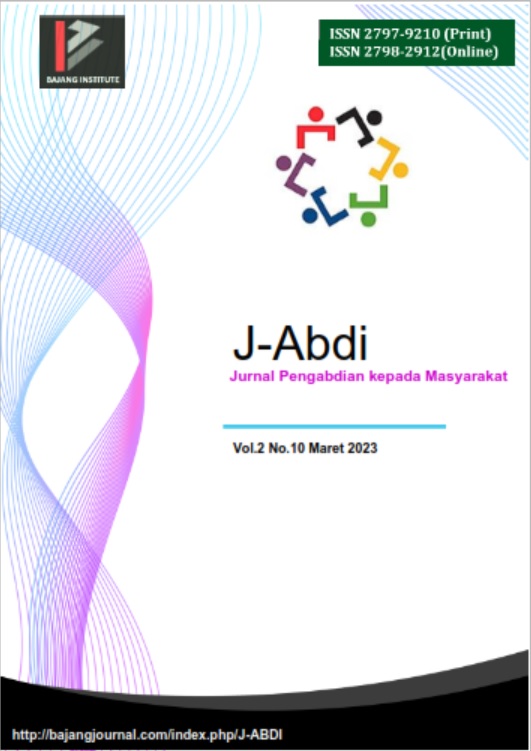PEMANFAATAN MATERIAL BIODEGRADABLE (BESE-ELEMENT) SEBAGAI MEDIA RESTORASI MANGROVE DI PESISIR NEGERI PASSO, KOTA AMBON
DOI:
https://doi.org/10.53625/jabdi.v2i10.5192Keywords:
BESE-Element, Biodegradable, Mangrove RestorationAbstract
Mangrove ecosystems have potential both ecologically, economically, physically, and chemically. The abundance of this potential causes pressure from anthropogenic activities, which results in the degradation of mangrove ecosystems. Several mangrove ecosystems in the Ambon City area have experienced degradation, so restoration is necessary. The Passo State area has the potential for a dense mangrove ecosystem and can be used as a nursery area to support other ecosystems. Increasing the potential of mangrove ecosystems in the Passo State area can be done through restoration using biodegradable materials (BESE-Elements). Mangrove restoration is carried out through community service activities, a collaboration between the Maritime Center and Wardeen Burg Ecology – The Netherlands. The result of the activity is that mangrove ecosystem restoration is carried out in semi-enclosed areas using 10 BESE-Element. Each BESE-Element was planted with 10 mangrove seedlings consisting of 5 seedlings and 5 propagules. The mangrove species planted were Bruguiera gymnorrhiza, Rhizophora apicutala, and Rhizophora stylosa. Around BESE-Elements planted seedlings and mangrove propagules as a control for mangroves in BESE-Elements.
References
Bengen, DG, Yonvitner, Rahman. 2022. Pedoman Teknis Pengenalan dan Pengelolaan Ekosistem Mangrove. (Bogor). IPB Press 76p.
Nordhaus I, Wolff M, Diele K. 2006. Litter processing and food intake of the mangrove crab Ucides cordatus in a high intertidal forets in Northen Brazil. Estuarine, Coastal, and Shelf Science. 67(1-2): 239-250.
Rahman, D Yanuarita, dan N Nurdin. 2014. Mangrove community structure in Muna Regency. Torani. 24(2): 29-36.
Rahman, Yulianda F, Rusmana I, Wardiatno Y. 2019. Production ratio of seedlings and density status of mangrove ecosystem in coastal areas of Indonesia. Advances in Environmental Biology. 13(6): 13-20.
Rahman, Y Wardiatno, F Yulianda, dan I Rusmana . 2020a. Socio-ecological system of carbon-based mangrove ecosystem on the coast of West Muna Regency, Southeast Sulawesi, Indonesia. AACL Bioflux. 13(2): 518-528.
Rahman, Y Wardiatno, F Yulianda, dan I Rusman. 2020b. Sebaran spesies dan status kerapatan ekosistem mangrove di pesisir Kabupaten Muna Barat, Sulawesi Tenggara. JPSL 10(3): 461 - 478.
Rahman, Y Wardiatno, F Yulianda, dan I Rusmana, Bengen, DG. 2020c. Metode dan Analisis Studi Ekosistem Mangrove. (Bogor). IPB Press. 124p
Saenger P, Hegerl EJ, Davie JDS. 1983. Global Status of Mangrove Ecosystem. The Environmentalist 3 (supplement 3).














